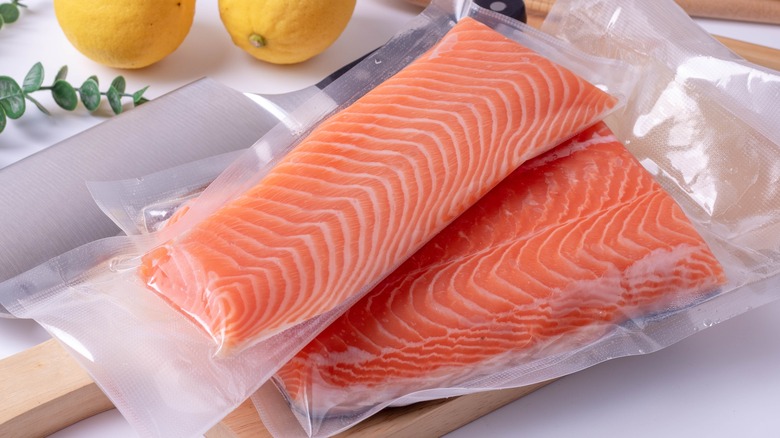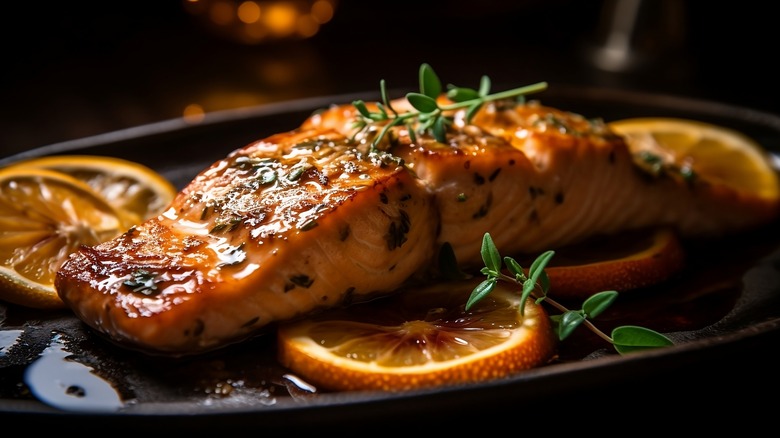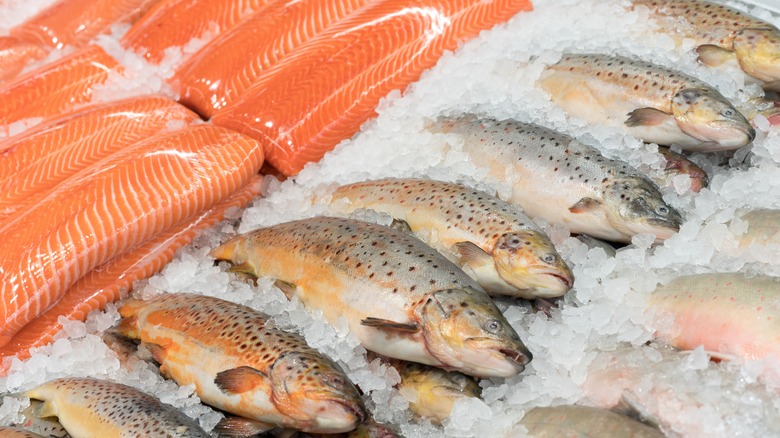Yes, You Can Totally Bake Salmon Straight From Frozen
Salmon is a dish that boasts refinement and preparation. But you don't have to get the most expensive cut to have a flavorful and satisfying meal. Buying frozen portions of salmon cuts down on time for at-home chefs who aren't in the position to spend hours on cooking, and frozen salmon can be just as good as fresh salmon. There are ways to prepare a frozen salmon that can elevate the dish. This involves an approach to cooking that varies from how you would normally prepare the fish.
Pan-searing frozen salmon or even cooking it in an air fryer is out. Because of the nature of frozen seafood, the best way to cook it is in the oven. Instead of spending time defrosting it in the fridge, you can pop the frozen fish straight into the oven. That said, there is some preparation involved. Using the oven to bake a frozen fillet is a two-step process that requires a marinade for best results.
Baking frozen salmon in the oven
To cook a frozen fillet of salmon perfectly, you will need a few key items. The most important are the cooking utensils. The first part of the cooking process will involve steaming the fish, which requires an oven-safe dish. Roasting the frozen pieces of salmon, covered, in the oven will saturate the fillet with steam, moistening the fish to perfection. Then you uncover the salmon for the second part of the cooking process. This is to prevent the salmon from becoming what people usually think of when frozen salmon comes to mind. Cooked with only steam, the salmon would be all water and no refinement. However, like broiling, roasting allows the fillet to become flaky and delicious.
If you want to add a unique flavor to your salmon, a marinade can make the cooking process more fruitful. Typically, salmon doesn't need anything more than a squeeze of lemon juice and a pinch of Old Bay. But using a marinade, such as a honey-based sauce, will not only add flavor to the fish but keep the fillet safe from aggressive roasting.
The many ways to cook frozen salmon
There has long been a stigma against frozen fish. Even for the most efficient chefs, it almost seems sacrilegious not to get the freshest cuts of fish. According to Alaskan chef Erik Slater, however, frozen fish is not the enemy.
"Many people don't realize that almost all seafood in the marketplace is frozen or previously frozen — from what's served at restaurants to what's sold at the seafood counter," Slater told Eater. Slater runs Seward Brewing Company in Seward, Alaska, and his restaurant serves a lot of fish. Slater recommends cooking from frozen directly. This might be because thawed fish can contain harmful bacteria, making cooking right from frozen to be the safest way to cook fish. He also explains that when you cook a frozen fillet, overcooking it is more difficult.
For those who insist on thawing, there are safe ways to do it. Laying the fish on the counter is common but leads to dangerous waters. The USDA confirms that bacteria grow in temperatures above 40 degrees Fahrenheit. The best way to defrost is therefore to place a cut of meat — fish or otherwise — in the refrigerator for several hours. Alternatively, place the cut in cold water to deter the growth of bacteria.


